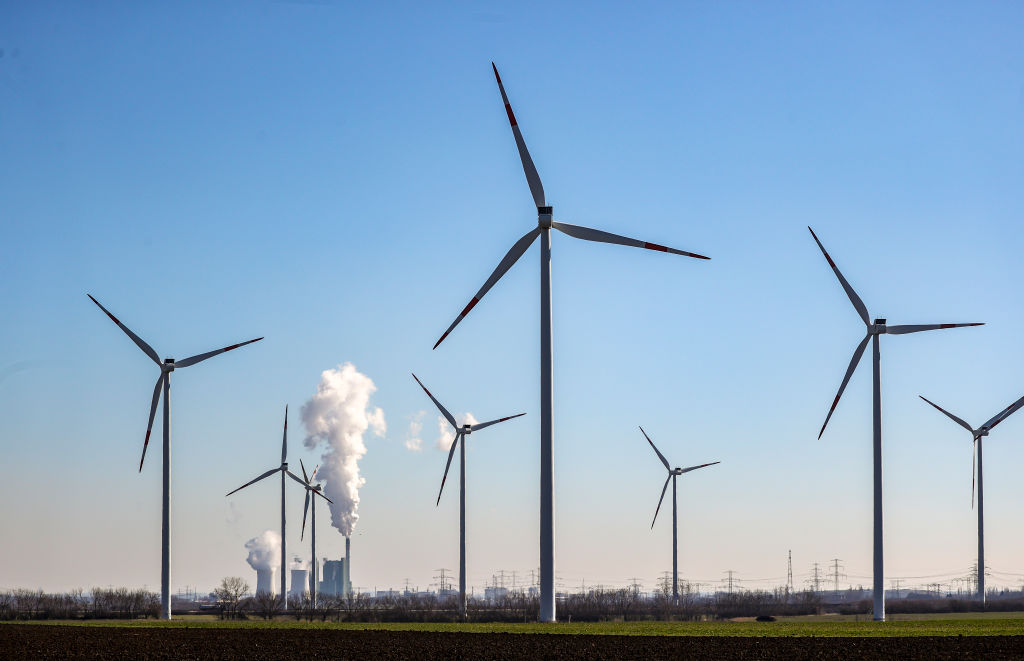timeThe 90,000 people and nearly 200 countries attending the United Nations COP28 climate conference in Dubai this month missed a historic opportunity. To escape the woeful lack of climate action since the 2015 Paris Agreement, the world must agree to a global carbon price. In one fell swoop, this will realign consumer demand, drive market functioning, reduce emissions and spur innovation. If only world leaders remembered the immortal words of legendary investor Charlie Munger: Show me incentives and I will show you results.
A carbon price will accelerate the move towards net-zero emissions because it recognizes the profit incentives of free markets to allocate capital efficiently within our rules-based global economic system. This will lead to companies writing off fossil fuels and investors to redeploy capital into clean energy solutions. The tools available today – sustainability reporting, voluntary commitments or naming and blaming – are not incentives; they are incentives. They are just a push and will not bring about the necessary change at scale. Denying the market a clear price point for carbon is like tying one hand behind our backs in the most important battle of our lives.
It’s time to come clean with the public and start constructing a new narrative. Yes, the once-in-a-century energy transition will require temporary increases in prices on everything from transportation and supply costs to heating and electricity bills while the world is still using fossil fuels; but carbon pricing will change business practices and consumer behavior , making low-carbon alternatives more accessible and reliable in the near future. A carbon price would make green products in energy, transport, agriculture and construction cheaper than fossil fuel products.
Over time, the price curve for green solutions will fall, and energy will account for a smaller share of personal income than it does today. At this magical tipping point, the price of carbon will become irrelevant. The market is the most powerful weapon to break away from fossil fuel dependence, but it requires countries to initiate carbon prices.
Why isn’t carbon pricing happening? The answer is simple: it’s politics, stupid. Politicians, especially in the United States, are afraid to tell voters that protecting our planet costs money. This collective avoidance must stop. My challenge to climate activists is to start calling out politicians who refuse to put a price on carbon. This will create the change we all desire.
There’s some good news: The world is already starting to take some steps in the right direction. More than 70 countries have implemented carbon prices in various forms and at different levels, including taxes, credits or emissions trading systems. and have the appropriate technical expertise to legally measure carbon and its sources.
But there is more work to be done. COP28’s focus on fiscal reforms to reduce support for high-emission industries such as methane and coal and provide subsidies for clean energy such as green hydrogen and solar power are positive. But they are far from there. Thanks to the Inflation Reduction Act, the United States has promoted the development of renewable energy through subsidies, but this policy does not match the scale of the climate issue. Government funding alone cannot meet global demand for clean energy. Moreover, at a time when the world is already precariously grappling with political divisions and fragile supply chains, such industrial policies rightly stoke sensitivities about high public debt and raise concerns about a global subsidy war.
Experts and world leaders continue to debate the best price for carbon emissions. At last week’s COP28 conference, I chaired a roundtable of business, investment and public government leaders that recommended starting with a global benchmark of $50 per ton. In the United States, an initial carbon price of $40 per ton is proposed in a plan from the Climate Leadership Council, backed by Nobel laureates, Republicans and Democrats. The revenue would be used to provide the average American household with about $2,000 a year to offset its carbon bill until the renewable energy market becomes cost-competitive. The plan is good for growth and green, and reduces economic inequality.
Regardless of its design, carbon pricing stands out as a unifying model that aligns incentives among investors, businesses and governments to decarbonize industry and finance green technologies. This means carbon will be reflected in all companies’ balance sheets, profit and loss statements, earnings reports and strategic plans. From then on, the social cost of carbon, from environmental damage to health impacts, will be factored into financial risks and investment decisions in a market-understood way, ultimately reshaping how the world responds to the most serious external threats.
Carbon pricing goes beyond traditional policy constraints and becomes not only the market basis for emissions reductions, but also a necessary tool for a just transition; as Pope Francis wrote in the 2015 encyclical Laudato Si’, it listens to the earth cries and the cries of the poor. Tangible carbon costs are the world’s most effective incentives for changing demand and aligning market forces to enable a clean energy transition toward a healthier, more prosperous world.
#world #put #price #carbon
Image Source : time.com
